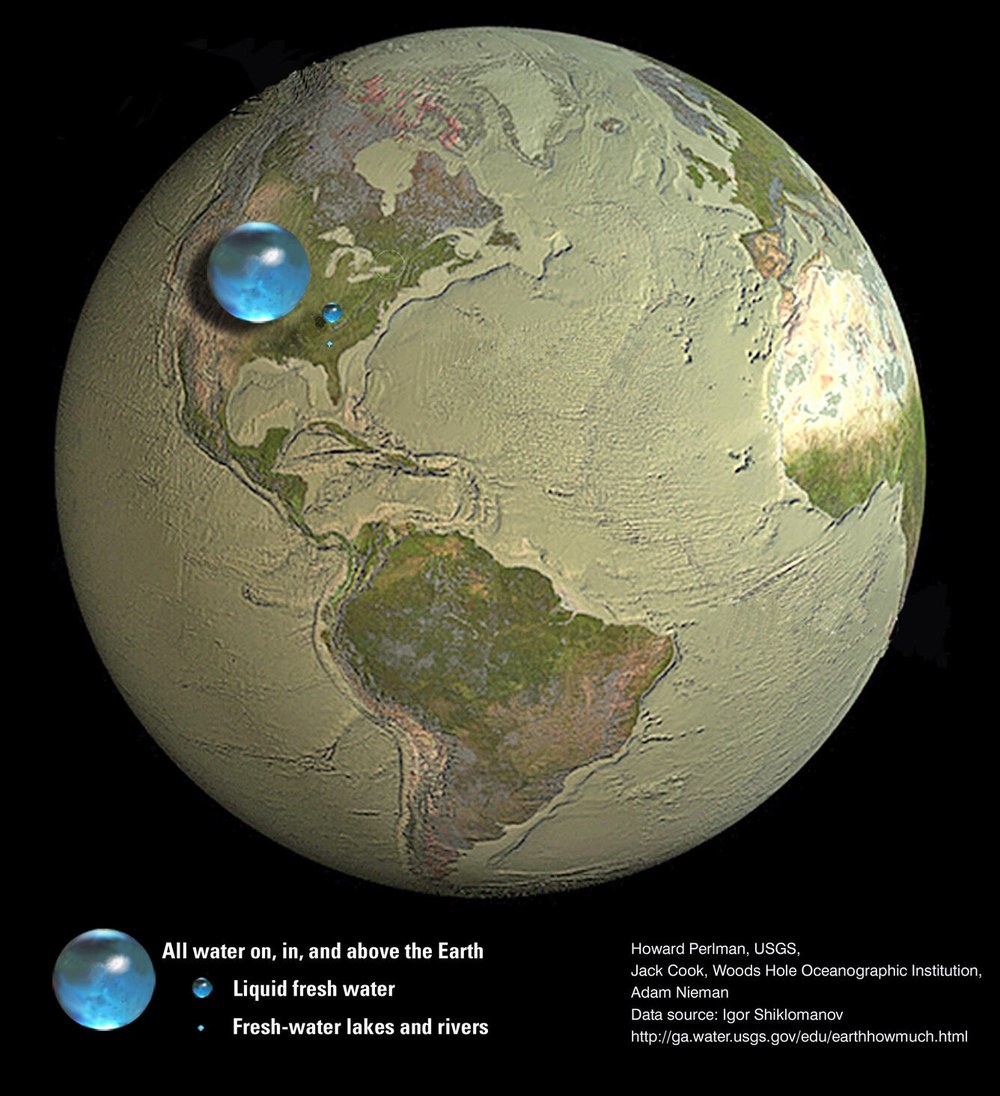Posted: July 3, 2025
Timber harvesting can pose risks to water resources if not carried out responsibly. To mitigate these impacts, Pennsylvania requires that Best Management Practices (BMPs) be used during earth disturbance activities, such as logging.

As shown by the small dot about the size of the period at the end of this sentence, freshwater rivers and lakes comprise just 0.3% of the Earthʼs total water. Graphic provided by Chuck Coup.
Have you ever stopped to think about how precious and limited our freshwater resources are on Earth? Water only comprises 1/4400 of the earth’s total mass, and while approximately 71% of the planet's surface is covered by water, nearly 97% of that is saltwater in the oceans, leaving only about 3% as freshwater. Of that 3%, 68.7% is locked away in glaciers and ice caps, and much of the remainder, 30.1%, is stored underground. Only a mere 0.3% of Earth's water exists as unfrozen surface water in rivers and lakes, which is the primary source for drinking, agriculture, and industry. This makes accessible freshwater exceedingly rare and underscores the importance of protecting and managing it wisely.
In Pennsylvania, surface water resources are abundant, with over 86,000 miles of streams and rivers, 403,924 freshwater wetlands, and numerous ponds, lakes, and reservoirs. These waterways are vital for the state's ecosystems and communities. Much of this water either exists on or passes through Pennsylvania’s 16.6 million acres of forestland. Our forests, particularly riparian buffers—the trees, shrubs, and grasses that grow along waterways—play a crucial role in maintaining water quality. They act as natural filters, absorbing pollutants from runoff, reducing erosion, and providing shade that cools water temperatures, all of which contribute to healthier aquatic environments.
Timber harvesting can pose risks to these water resources if not carried out responsibly. Poorly managed logging operations can lead to increased sedimentation and disruption of natural water flows, which can degrade water quality and harm aquatic habitats. To mitigate these impacts, Pennsylvania requires that Best Management Practices (BMPs) be used during earth disturbance activities, such as logging. These practices are designed to protect water resources during timber harvesting by minimizing soil disturbance, controlling erosion, and preventing sediment and other forms of pollution from entering our waterways.
The effectiveness of these BMPs is evident; according to the Pennsylvania Department of Environmental Protection (DEP), less than 0.03% of the state's impaired stream miles are attributed to forestry activities. This success is largely due to the commitment of landowners and timber harvesters to adhere to these guidelines. Moreover, the implementation of BMPs is not only a legal requirement under Pennsylvania's regulations but also a moral imperative to ensure that future generations have access to clean and abundant water.
By understanding the interconnectedness of forests and water quality, and by adhering to established BMPs during timber harvesting, we can protect these resources for the benefit of all living things. Responsible forest management is not just about sustaining trees; it includes safeguarding the very water that sustains life.
For more information about the PA SFI® Implementation Committee, visit their website or call 888-734-9366.
Written by Chuck Coup, PA SFI Implementation Committee Program Manager
James C. Finley Center for Private Forests
Address
416 Forest Resources BuildingUniversity Park, PA 16802
- Email PrivateForests@psu.edu
- Office 814-863-0401
- Fax 814-865-6275
James C. Finley Center for Private Forests
Address
416 Forest Resources BuildingUniversity Park, PA 16802
- Email PrivateForests@psu.edu
- Office 814-863-0401
- Fax 814-865-6275

